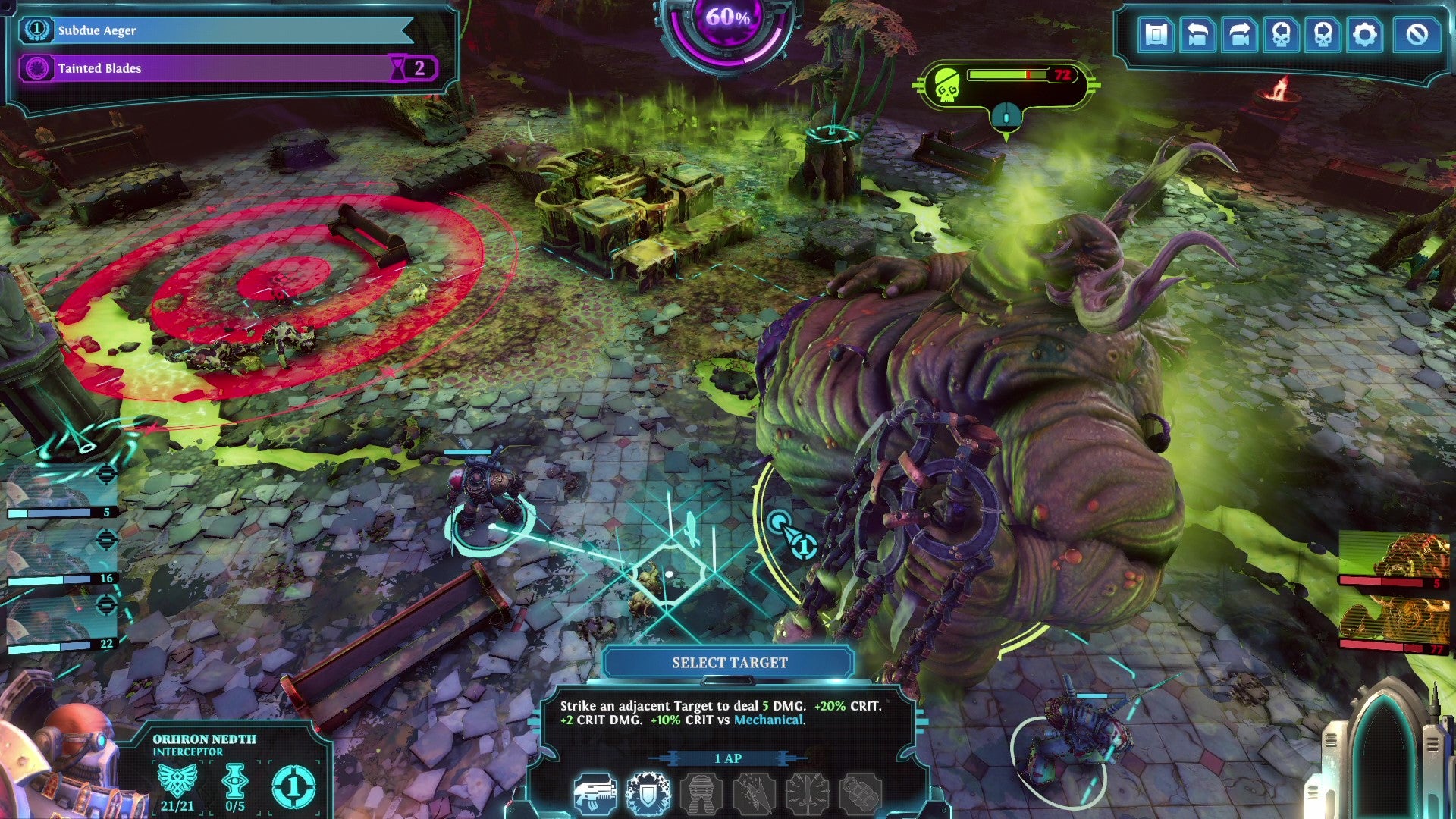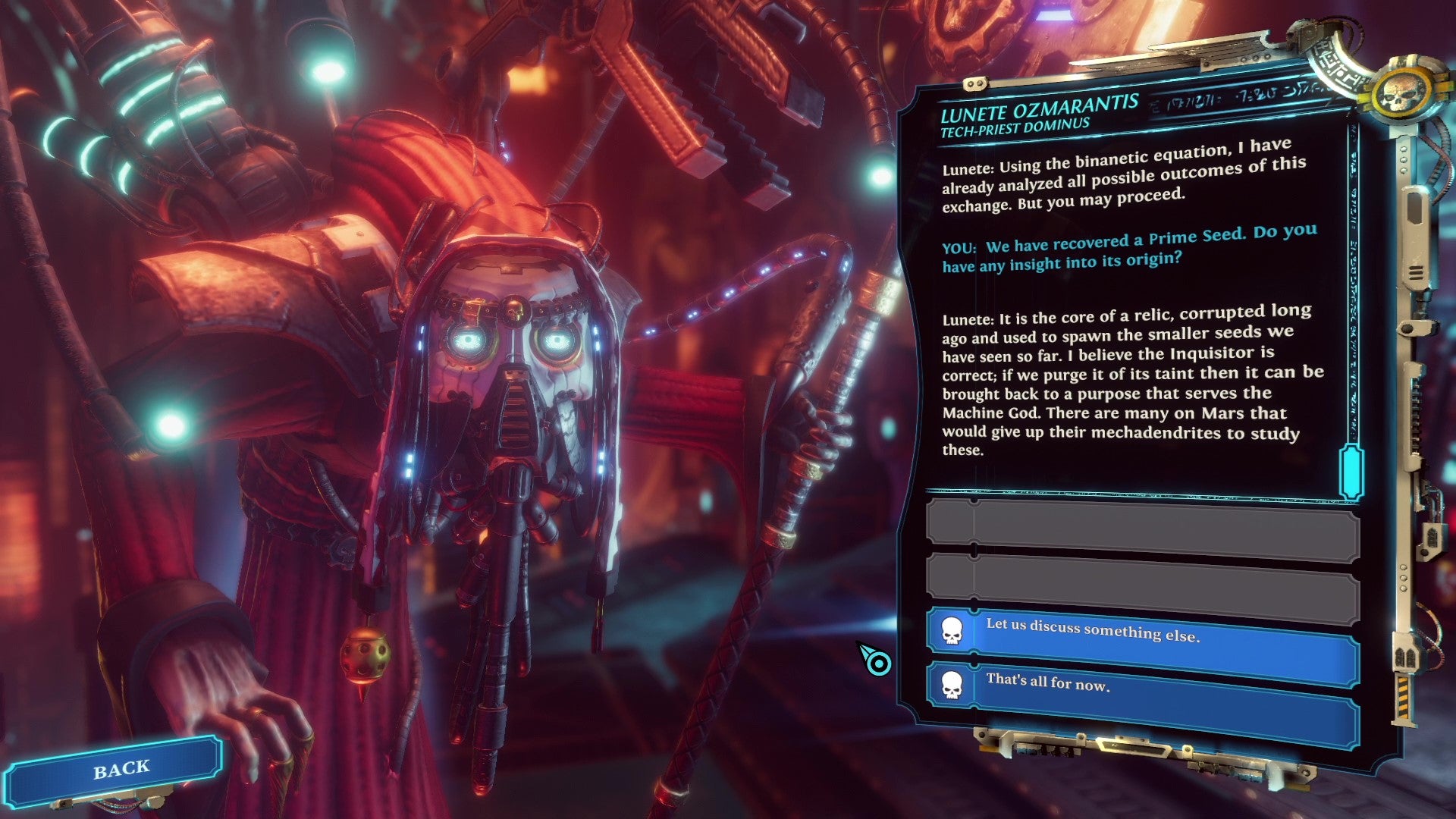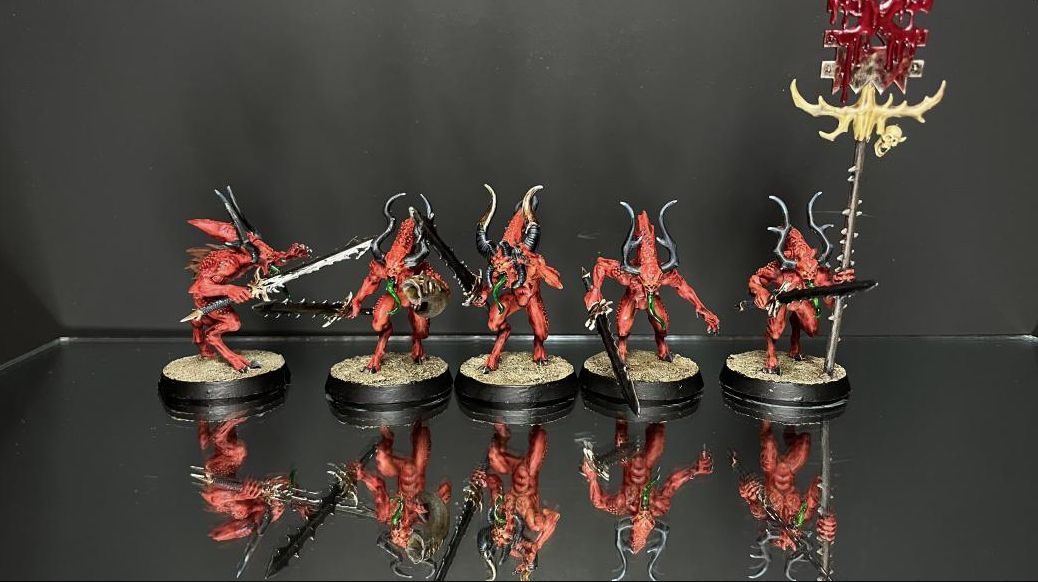Complex Games, the developers of recent XCOM-like Warhammer 40,000: Chaos Gate – Daemonhunters not only managed to resist the mutating power of the Warp, but produced an absolute cracker of a game. Suspecting pacts with Dark Powers were behind it, I put on my big Inquisitorial hat and set off to question Noah Decter-Jackson, the game’s Creative Director. RPS Emperor Katherine, Beloved By All, awarded it a coveted Bestest Best back in May, and I’ve been rather enamoured with it myself. As a big Warhammer nerd, I really appreciate how they’ve absolutely nailed the feeling of Space Marines, and not just any Space Marines, elite, super-secret, space wizard Space Marines, charging about being generally spacey and mariney. Portraying the genuinely superhuman in a game can’t be easy. The average shooty video game protagonist can sprint around pulling off headshots while soaking up hails of gunfire, then duck behind a wall for a quick breather before doing it all over again. They may as well be Space Marines already. On the other hand, XCOM soldiers are generally pretty fragile, to the point where the best way to play the game is to name them all after your friends and then regale them with hilarious tales of how they met their untimely demise. Warhammer 40,000: Chaos Gate – Daemonhunters: Subtitle does a sterling job of balancing these two competing factors. Playing aggressively, you can pull off some plucky assaults that barely give your enemies time to react, let alone mount a coherent defence. At the same time, a few wrong moves and you’ll quickly become overwhelmed. I wanted to know more about how that balance was achieved, and what influences the team took from the tabeltop game, and I got some great responses to my emailed questions. I was pleasantly surprised when I saw the game was about Grey Knights. What drew you to them? We actually started with Nurgle and the Death Guard. We had this idea many years ago of creating a strategic conflict and campaign built around a threat that could not be fought so easily with martial force. As a result, we sort of naturally came to an idea fitting the 40K universe of an intergalactic plague. That naturally led us to Nurgle, which naturally led us to the Grey Knights as the ideal force to contend with such a threat in Warhammer 40,000: Chaos Gate – Daemonhunters. How do you balance conveying the feel of such powerful warriors with providing an interesting tactical challenge? It’s not easy, and we’re still trying to perfect it: the Astartes need to feel powerful, rather than being flimsy and disposable, which is sort of the standard balance in this genre. We tried to flip the script in many different ways on that standard, giving the player tools that they can use like the Knights’ psychic abilities, equipment and the environment itself – this allows the player to be more active and aggressive. The sense of ’tension’ in this kind of game balance is very different because of that. The Grey Knights can’t be made to feel expendable, so as a player you aren’t going to have that same immediate fear that if one of your squadmates walks around a corner they’ll instantly get pot-shot and be out for the rest of the game. In practice, this means both pushing the scale and numbers of enemies vastly higher than your small squad, as well as building out mechanics based around pressure from attrition, particularly through accumulating injuries over time. Was there any part of the tabletop games or the fiction that particularly inspired you? Anything that leapt out and made you think “we’ve got to include that”? Well, the tabletop certainly is an inspiration at a very high level: equipment and abilities are taken or adapted from the various books and codices over the years. The number one thing we knew we wanted in the game once Nurgle was chosen as the antagonist was to work in Nurglings, which we had to do a bit creatively to fit them properly within the mechanics – and we think that worked out pretty well. From the standpoint of the fiction, we’re familiar with the narrative trope where an Inquisitor shows up, puts the run-around on the ‘heroes’, and blatantly betrays them all to Chaos. We instead wanted to construct a narrative that focused on the dedication, will and sacrifice needed to overcome these kinds of odds – that brought out a bit more of the human versus the superhuman in this universe. What was the level of Warhammer experience in the studio before you started work on the game? Did anyone get into the hobby through working on the game? Myself and several of my partners of the past 20 years have been playing the tabletop since our teens, and have engaged with the universe in other ways since (books, board games, video games, etc…). Many of our team members are the same, so we’re all pretty familiar with Warhammer and Warhammer 40,000 from many different angles and perspectives. We also launched The Horus Heresy: Drop Assault for mobile in 2015, so we’ve been working directly on Games Workshop digital games for close to 10 years now. And just for fun, is anyone working on any minis at the moment and can we have pictures please? You can probably spot some of the mini work our team’s done casually on lunch breaks in the studio in our dev diaries. I’ve only started to get back into painting a bit over the past couple of years (Death Guard, of course). I’ve attached an image of one of our team member’s recent work on some Bloodletters: I love the blood work on that banner! There you have it, my humble acolytes. Not only was Nurgle behind Warhammer 40,000: Chaos Gate – Daemonhunters: Subtitle - Deluxe from the start, but we have pictorial evidence of a Khornate daemon infestation at the studio. Time to call in the Grey Knights!


